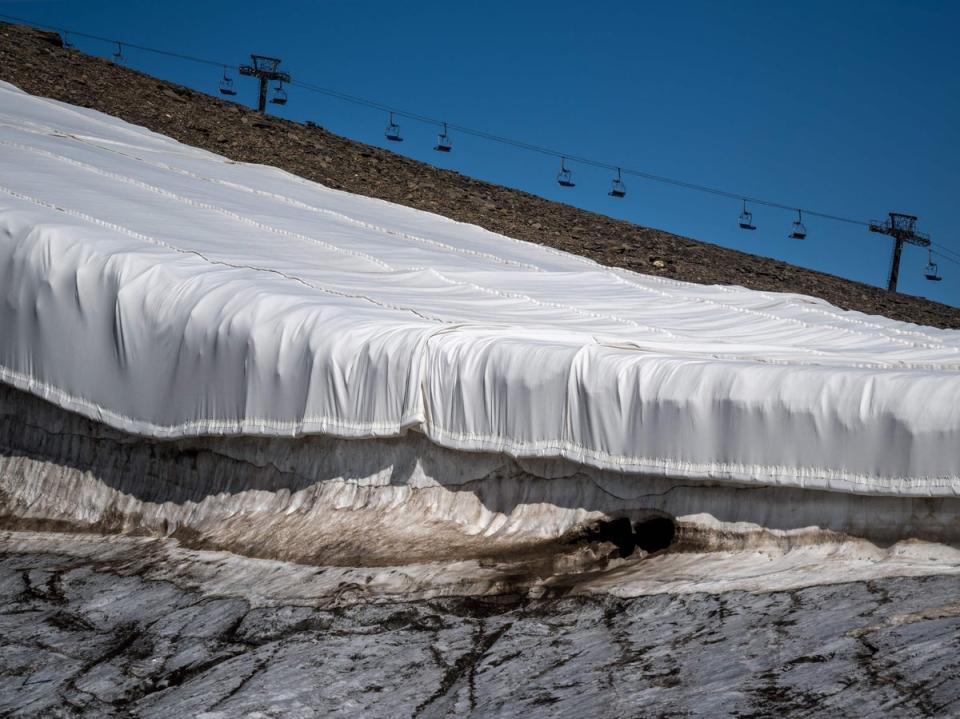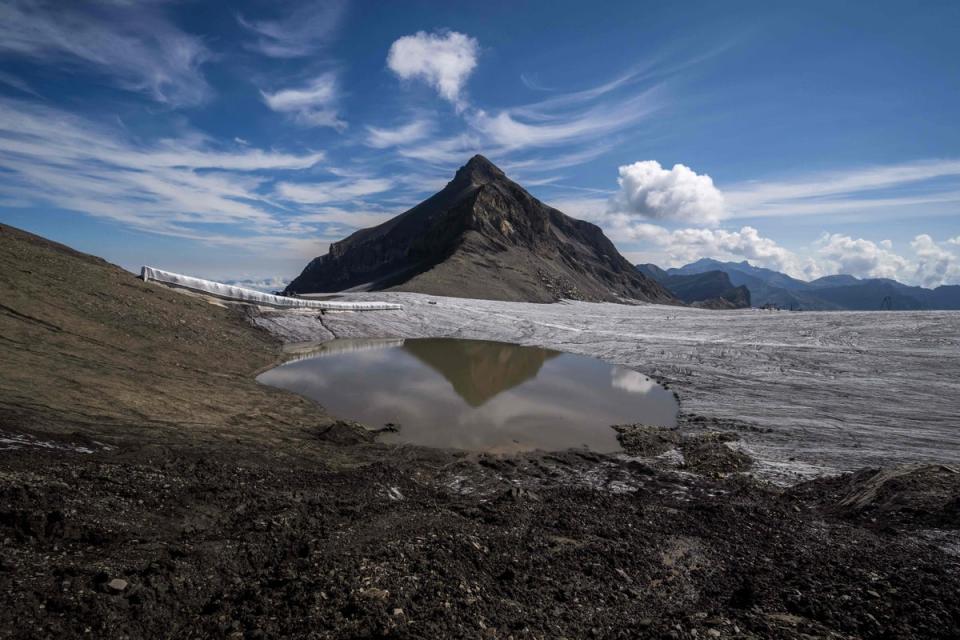‘Devastating’ Alpine glacier melt during heatwave reveals human bones and aircraft wreckage
The record-breaking heatwave still impacting parts of Europe is leading to “extreme” ice loss in the Alps, and has exposed human remains and aircraft wreckage as glaciers retreat.
In Switzerland, two sets of unidentified bodies have been discovered by hikers.
They include bones found near a disused path close to the Chessjen glacier, believed to be from climbers who died in the Seventies or Eighties, according to a local guide, and last week a body was found on the Stockji glacier near the resort of Zermatt.
DNA analysis is underway to help police identify the corpses. Since the mid-1920s, police in the Alps have maintained a list of people known to have gone missing in the mountains, and there are currently around 300 names on the list.
Due to the current heatwave, the rate of glacial melting is now well beyond what scientists expected, researchers have warned.
Low levels of winter snowfall and summer heatwaves across the continent for two summers in a row have left the ice especially vulnerable, resulting in glaciers being on track for their highest mass losses in at least 60 years.
In recent weeks, record high-altitude freezing points have been recorded over the Alps, and alarming video has been captured of huge ice collapses, due to the destabilisation of glaciers caused by melting. Meanwhile, blankets have been used in many locations to try to insulate glaciers against further heat.
The thinning ice and snow have even revealed the wreckage of an aeroplane known to have crashed in 1968, killing three people. The bodies were recovered after the crash, but the wreckage has remained embedded within Switzerland’s Aletsch glacier since then.
“There’s no doubt that the heatwave this summer has stripped the glaciers bare of winter snow much earlier than we might ordinarily expect,” Duncan Quincey, a professor of glaciology at Leeds University told The Independent.
Last month, while high temperatures soared beyond 40C in many European countries, highs of 30C were recorded in the Swiss mountain village of Zermatt, 1,600m above sea level.
As well as the record summer temperatures, the lack of snowfall during the winter has played a significant role in the glaciers’ melting.
“The impact of the dry winter and hot summer is devastating for many of our European glaciers,” Professor Quincey said.
“The impact is that the glacier ice is exposed to radiation for a longer period and therefore melt will be much greater during this year’s ablation period than we have observed in recent years.

“Glacier ice also tends to absorb more radiation than snow because it has a lower albedo [reflectivity], meaning that the additional melt is further enhanced compared to if the blanket of snow was preserved until later in the season.”
Glaciologists in Switzerland told Reuters they “did not expect to see such an extreme year so early in the century”.
Around the world, mountain glaciers left behind by the last ice age are retreating due to the worsening climate crisis.
In the Alps, glaciers are particularly at risk because they are smaller than those in other areas. Furthermore, temperatures in the Alps are rising by about 0.3C a decade – roughly twice as fast as the global average.

“They are already heavily in recession, and extreme events like those we are seeing at present accelerate the loss of ice mass beyond what we forecast within numerical models,” said Prof Quincey.
“Even without accounting for an increase in extreme events during coming decades it is likely we will be looking at a largely ice-free landscape by 2100.”
He said the current situation provides insight into how the climate crisis raises the frequency and intensity of high levels of melting and reveals “the life expectancy of the glaciers will be considerably shortened compared to what current models tend to show”.
Previous research has found that rapid ice loss from mountain glaciers can have major impacts on irrigation used for sizable settlements, while the destabilisation of the ice poses new threats – both from collapse and from the formation of precarious glacial lakes in depressions made by the glaciers.
“We should all be concerned about the long-term effects of melting,” said Prof Quincey.
“As we have seen recently in both the Italian Alps and in Kyrgyzstan the meltwater that is produced can be stored beneath the ice, lubricating and pressurising the ice, and destabilising the ice.
“This is the future that we are facing if we don’t rapidly address the climate crisis.”

